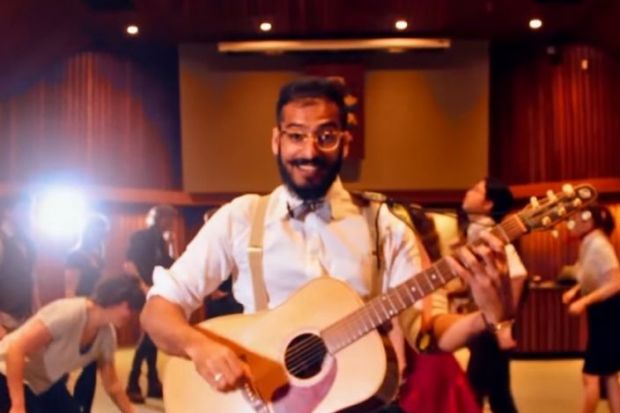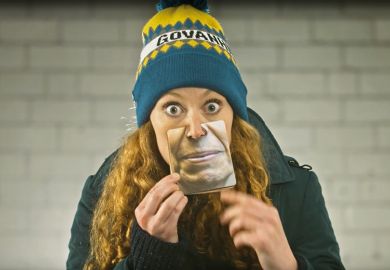It must be hard to explain to non-specialists a PhD about “multimodal meaning making”, “electrospun carbon nonfibers” or “turbulent flows in soap film”.
Yet if you can’t express it verbally, why not dance it instead? Doctoral students working on 50 different topics all submitted entries to this year’s Dance Your PhD competition, organised by the American Association for the Advancement of Science and Science magazine.
The competition was created in 2008 by John Bohannon, who described it as “like a dog whistle for a super-specific group of people around the world: scientists who feel at home in the arts. These are master communicators who are already creatively engaging with the world around them. I just gave them a great excuse to communicate their work on a very big and unusual stage.”
Dance Your PhD is open to anyone doing a science-related PhD who is willing to get on stage and create a YouTube video that “convey[s] something essential about [their] research” and is also “fun to watch”. The judges are looking for “emotion and stage presence, not being virtuoso”. Although many entrants are far from professional-level dancers, added Mr Bohannon, they all “love to perform”.
In some cases, the subject matter has fairly obvious dance potential. Kohinoor Monish Darda of Bangor University is studying “neural mechanisms of imitation control”. The ways people mirror each other’s movements in social settings lent themselves well to the conventions of Indian classical dance, which she has been studying for years.
Less obviously danceable is the theme of Pramodh Senarath Yapa’s winning entry, “non-local electrodynamics of superconducting wires” – although he has sensibly called it “Superconductivity: the Musical!”
Based at the University of Alberta, Mr Senarath Yapa, a keen swing dancer, said that he had known about the competition for several years. After making “the connection that superconductivity relies on lone electrons pairing up when cooled, and that I could represent that as electrons being unsociable people who suddenly become joyful once paired up, I knew I had to enter”, he said.
The video features “good friends from the swing dancing community” and combines all his “main passions in life – community-building, dancing, music, physics and educational outreach”. At a time when there seems to be “a polarisation in attitudes towards experts and pockets of anti-intellectualism cropping up”, Mr Senarath Yapa said he believed that “it has become doubly important…to reach these corners that resist traditional forms of communication”.
POSTSCRIPT:
Print headline: Scientists swing in style to ‘dance their PhD’
Register to continue
Why register?
- Registration is free and only takes a moment
- Once registered, you can read 3 articles a month
- Sign up for our newsletter
Subscribe
Or subscribe for unlimited access to:
- Unlimited access to news, views, insights & reviews
- Digital editions
- Digital access to THE’s university and college rankings analysis
Already registered or a current subscriber? Login











